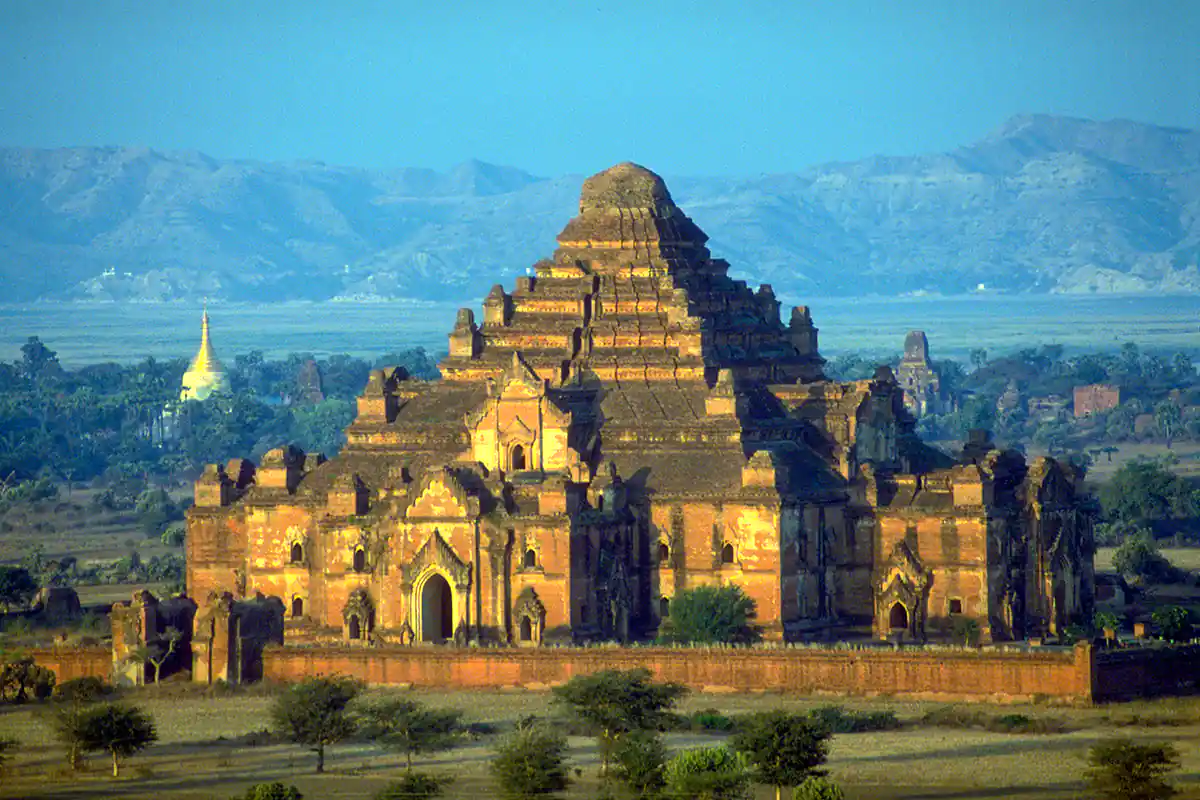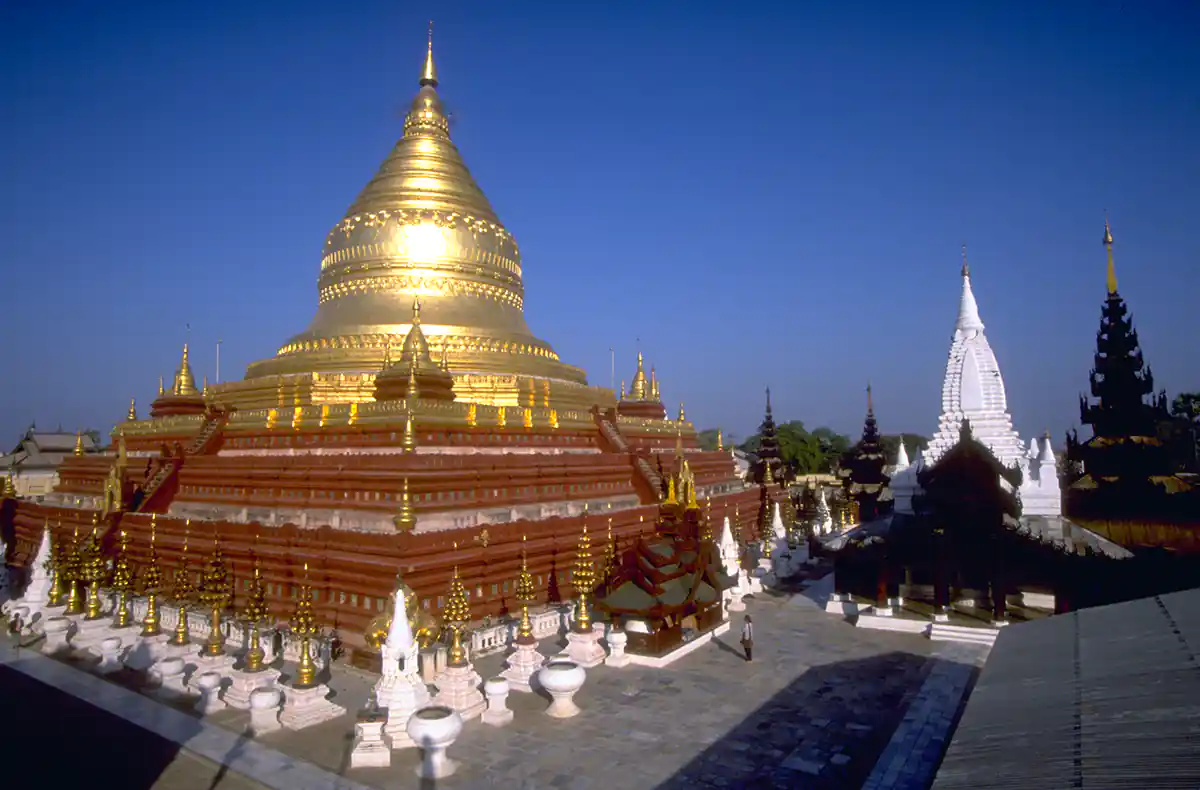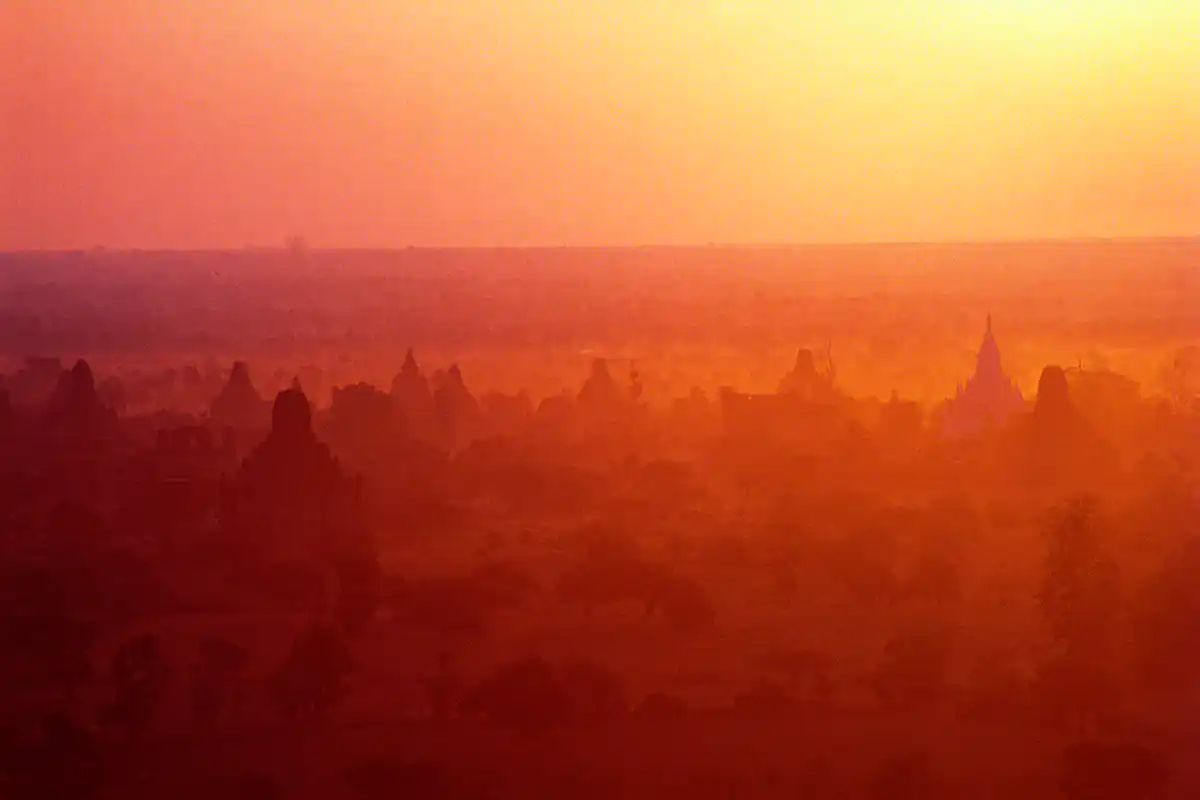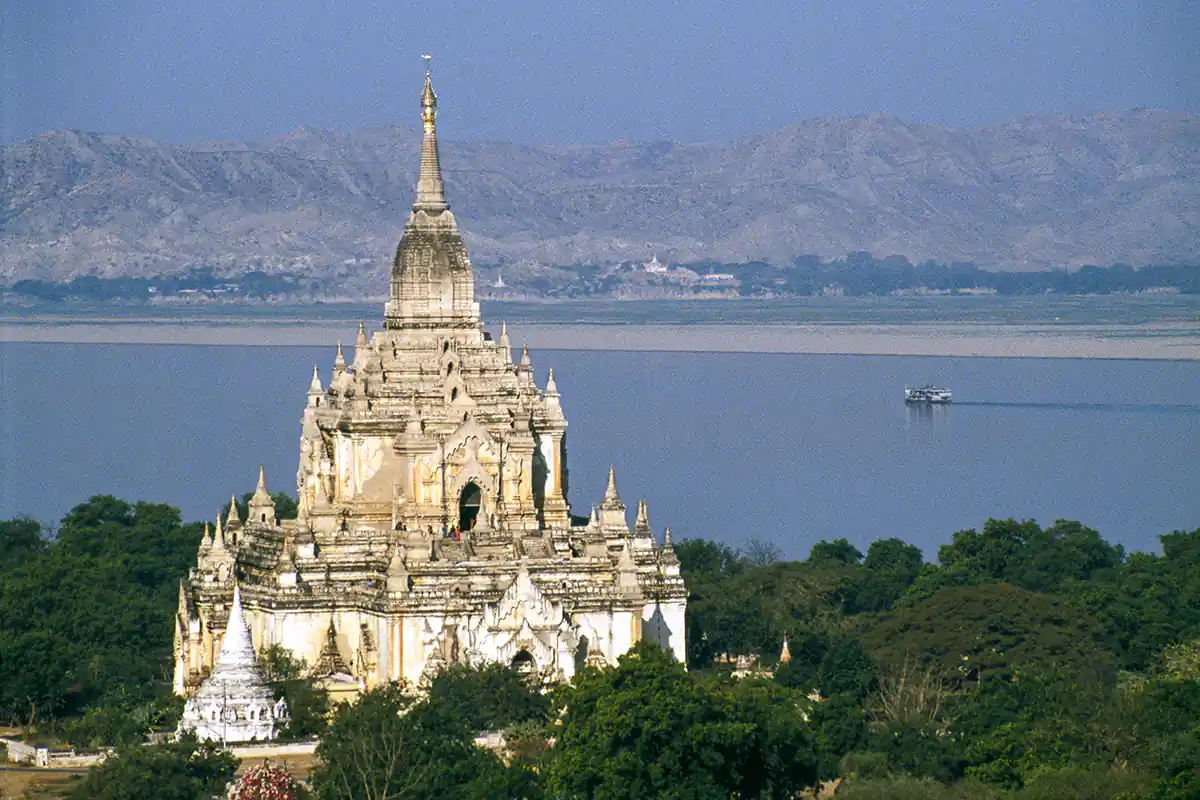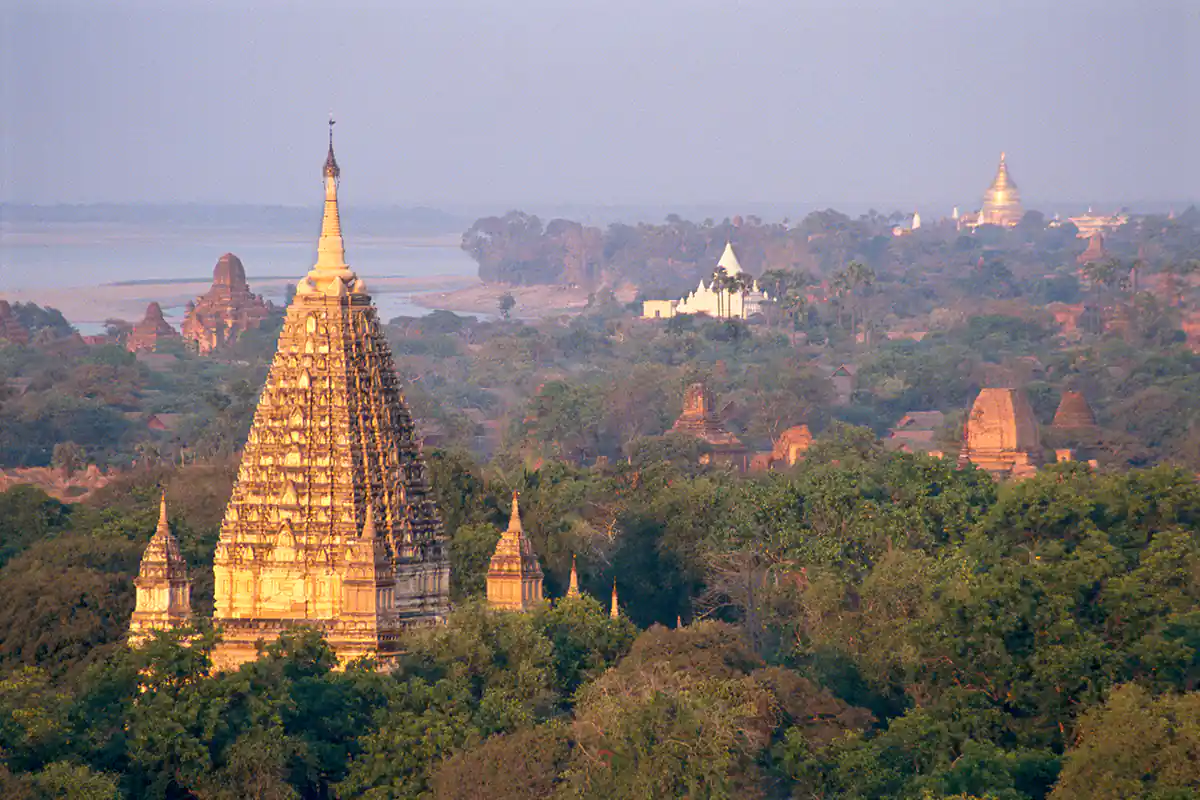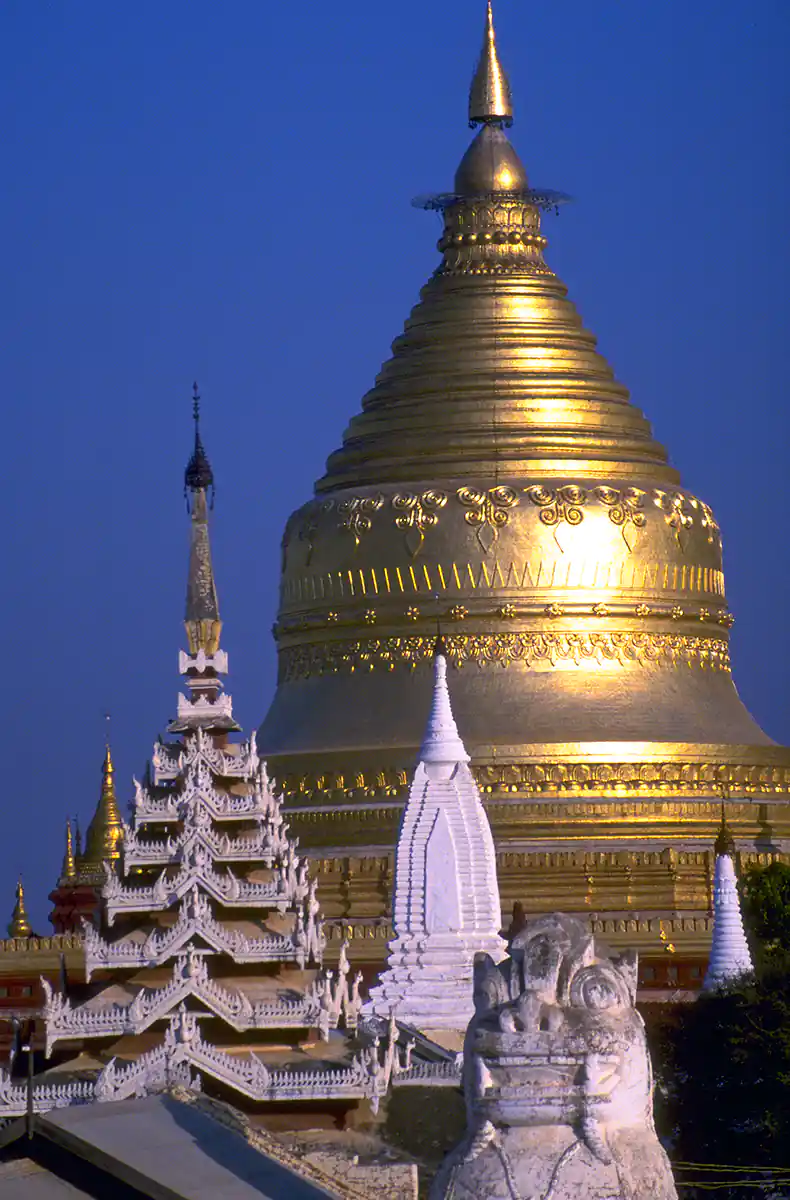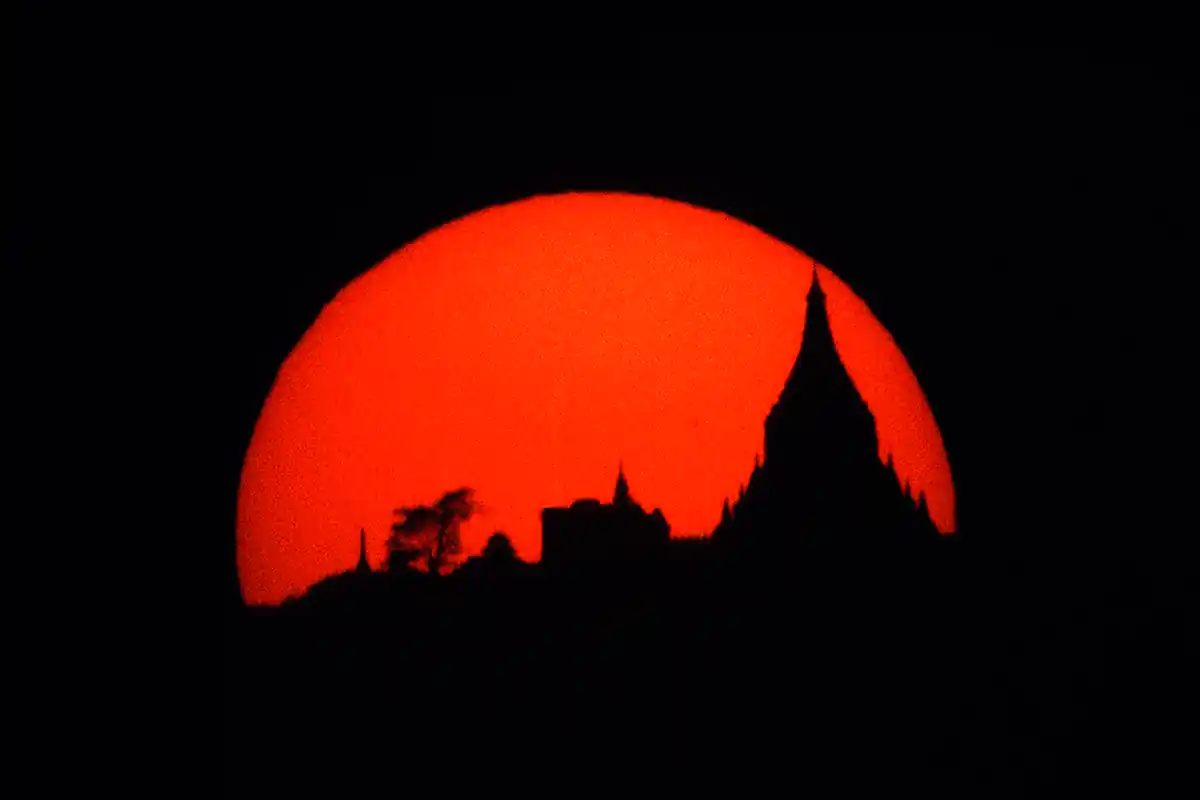Bagan, Myanmar (Burma)
Southeast Asia has two preeminent ancient religious cities: Bagan in Burma and Angkor in Cambodia. Both sites are notable for their expanse of sacred geography and the number and size of their temples. Bagan is the most extraordinary for many visitors because of its beautiful views. Scattered across a vast dusty plain are scores of exotic Buddhist temples. The kingdoms of Bagan date to the early second century BC, yet the region entered its golden age much later, during the reign of King Anawrahta in 1057. From that time until Kublai Khan’s forces overran it in 1287, more than thirteen thousand temples, pagodas, and other religious structures were built. Today, seven centuries later, approximately twenty-two hundred remain standing. The river Irrawaddy has washed away nearly one-third of the original city area, and thieves in search of treasures have torn apart many temples, while earthquakes and the ravages of time have reduced hundreds of other temples to piles of crumbling stones.
The photographs illustrate the following temples:
- Ananda Temple. This temple was completed in 1091 A.D. by King Kyanzittha. It is modeled after the legendary Nandamula cave in the Himalayan mountains. Soaring to 51 meters, it received its golden gilding in 1990 in commemoration of the 900th anniversary of its construction. Contained within the temple are four statues of the Buddhas of the four ages. Kakusandha faces north, Konagamana faces east, Kassapa faces south, and Guatama, the most recent Buddha, faces west.
- Gawdawpalin, built in the 12th century by King Narapatisithu, the 60-meter temple was severely damaged in a 1975 earthquake but has been completely reconstructed.
- Dhammayangyi, the largest temple in Bagan, it was built by King Narathu who reigned from 1167 to 1170.
- Shwesandaw, built in 1057 by King Anawahta, the stupa enshrines hairs of the Buddha. It is sometimes called the Ganesh Temple after the elephant headed Hindu god whose images once stood at the corners of each of the five terraces.
- Mahabodhi, this temple is an exact, though smaller, replica of the famous Bodhi temple in Bodh Gaya, India (where the Buddha attained enlightenment beneath the Bodhi tree). It was built during the reign of King Nantaungmya (1210-1234) and is completely covered with niches containing seated Buddha figures.
- Shwezigon, this pagoda was built as the most important reliquary shrine in Bagan. Begun by King Anawrahta and completed by King Kyanzittha in 1089, it contains several bones and hairs of the Buddha. Pilgrims throughout Burma journey to Shwezigon each year for a great festival during the Burmese month of Nadaw, which falls in November-December. This festival is hugely popular because elements of pre-Buddhist Nat worship (Nats are pagan, animistic spirits) were combined with Buddhist themes in the pagoda’s construction. Shwezigon is thus a pilgrimage center for the archaic shamanic culture of Burma and the newer religion of Buddhism.

Martin Gray is a cultural anthropologist, writer and photographer specializing in the study of pilgrimage traditions and sacred sites around the world. During a 40 year period he has visited more than 2000 pilgrimage places in 160 countries. The World Pilgrimage Guide at sacredsites.com is the most comprehensive source of information on this subject.
